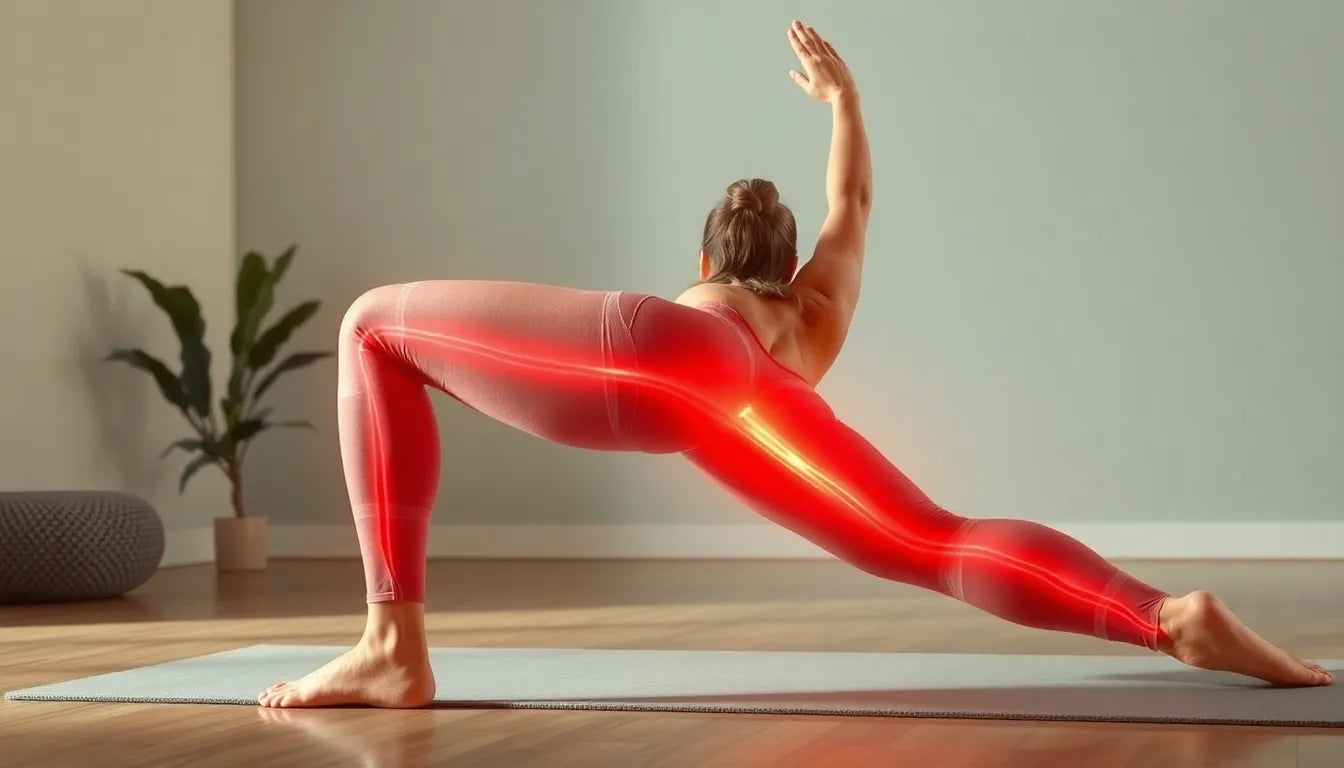Imagine waking up one morning and feeling a sharp pain in your back that just won't go away. Could it be more than just a bad night's sleep? For many, this scenario is all too familiar and could signal the onset of a herniated disc, a condition that can significantly impact your daily life if left unchecked. Understanding the signs of a herniated disc is crucial for maintaining your health and well-being.
understanding a herniated disc
A herniated disc occurs when the soft inner gel of a spinal disc pushes through a tear in its outer layer, often leading to pain and discomfort. This condition is one of the most common causes of back pain, a prevalent issue that affects millions of people worldwide. Early detection of a herniated disc is essential, as it can prevent further complications and allow for timely medical intervention.
Back pain is a widespread ailment, with herniated discs being a frequent culprit. These discs, located between the vertebrae of the spine, act as cushions to absorb shock. However, when one of these discs herniates, it can press on nearby nerves, leading to symptoms that can range from mild discomfort to severe pain and immobility.
the importance of early detection
The purpose of this post is to help you identify the warning signs of a herniated disc before complications arise. Recognizing symptoms early is vital for seeking appropriate medical care and preventing long-term damage. The sooner you can identify these signs, the better your chances of managing the condition effectively and maintaining your quality of life.
By understanding the early indicators of a herniated disc, you can take proactive steps towards addressing the issue. This knowledge empowers you to seek medical advice promptly, potentially avoiding more invasive treatments in the future. Moreover, early recognition of symptoms allows you to make necessary lifestyle adjustments that can aid in recovery and prevent further injury.
In the following sections, we will delve deeper into the common symptoms associated with herniated discs, discuss the specific signs based on the location of the disc, and explore natural recovery options. By equipping yourself with this information, you can better navigate the challenges posed by a herniated disc and take control of your health.
identifying common symptoms of a herniated disc
Recognizing the signs of a herniated disc is crucial for early intervention and effective management. One of the most common symptoms is pain, which can manifest in various forms depending on the location of the affected disc. According to the Mayo Clinic, individuals may experience localized pain in the back, buttocks, or legs. This pain often intensifies with movements such as coughing, sneezing, or bending, indicating that the disc is pressing on nearby nerves.
Another prevalent symptom is numbness and tingling. These sensations typically occur in areas served by the affected nerves. For example, if the herniated disc is in the lumbar region, these symptoms might be felt in the lower extremities. This is a result of nerve compression, which disrupts normal sensory signals.
Muscle weakness is also a significant indicator of a herniated disc. This weakness can affect mobility and the ability to perform everyday tasks. Individuals may find it challenging to lift objects, walk, or even stand for extended periods. This symptom arises because the nerves responsible for muscle control are compromised, reducing their ability to function effectively.
symptoms based on disc location
The location of the herniated disc plays a crucial role in determining the specific symptoms experienced. In the lumbar region, symptoms often include sciatica, a condition characterized by sharp, shooting pain that radiates down the leg. According to Johns Hopkins Medicine, this pain is typically accompanied by lower back discomfort, which can significantly impact daily activities.
In contrast, a herniated disc in the cervical region can lead to neck pain and symptoms that radiate to the shoulders or arms. This can result in a limited range of motion and difficulty performing tasks that require arm strength or dexterity. Understanding these location-specific symptoms is essential for accurate diagnosis and treatment.
natural recovery and lifestyle adjustments
Many cases of herniated discs resolve naturally over time. The Cleveland Clinic notes that the body can often heal itself, with symptoms improving within weeks or months. During this period, adopting certain lifestyle adjustments can aid recovery. Rest is crucial, allowing the body to repair and reduce inflammation. However, prolonged inactivity should be avoided as it can lead to muscle atrophy and stiffness.
Incorporating gentle exercises and stretches into your routine can help maintain flexibility and strength. It's also beneficial to focus on posture correction to minimize strain on the spine. Ergonomic products, such as supportive chairs and mattresses, can provide additional relief and promote proper alignment during recovery.
emergency symptoms requiring immediate attention
While many herniated discs improve with time, certain symptoms necessitate urgent medical evaluation. Sciatica.com highlights key emergency signs, such as loss of bladder or bowel control, which may indicate cauda equina syndrome, a serious condition requiring prompt intervention. Severe pain that doesn't improve with rest or medication is another red flag that should not be ignored.
If you experience any of these emergency symptoms, seek medical attention immediately. Early intervention can prevent permanent nerve damage and ensure the best possible outcome.
By understanding the common and location-specific symptoms of a herniated disc, as well as recognizing when to seek immediate medical care, you can take proactive steps towards managing your condition effectively. In the next section, we will explore the long-term effects of nerve compression and discuss lifestyle and ergonomic solutions that can support recovery and prevent future occurrences.
effects of nerve compression and management strategies
Nerve compression from a herniated disc can lead to various long-term effects if not addressed promptly. According to the American Association of Neurological Surgeons (AANS), ongoing nerve compression may result in chronic pain, persistent numbness, or even permanent nerve damage. This underscores the importance of early detection and intervention to prevent such outcomes.
To better understand the symptoms associated with nerve compression, consider the table below, which illustrates how symptoms can vary based on the disc's location and the affected nerves:
| Disc Location | Affected Nerves | Common Symptoms |
|---|---|---|
| Lumbar Region | Sciatic Nerve | Sciatica, lower back pain, leg pain |
| Cervical Region | Brachial Plexus | Neck pain, shoulder pain, arm weakness |
lifestyle and ergonomic solutions
Managing the symptoms of a herniated disc often involves lifestyle changes and ergonomic solutions. Correcting posture is a fundamental step to alleviate pressure on the spine and reduce discomfort. Ergonomic aids, such as supportive chairs and desks, can play a crucial role in maintaining proper alignment during daily activities.
Incorporating regular low-impact exercises, like swimming or walking, can help maintain muscle strength and flexibility without placing excessive strain on the back. Additionally, ergonomic products offered by companies like Anodyne can provide targeted support and comfort, helping individuals manage their symptoms effectively.
These solutions not only aid in the recovery process but also help prevent future occurrences of herniated discs. By integrating ergonomic aids into your daily routine, you can create a more supportive environment for your spine, promoting long-term spinal health.
conclusion
Recognizing the warning signs of a herniated disc and seeking timely medical advice are crucial steps in managing this condition. By understanding the symptoms and their implications, you can take proactive measures to address the issue before it leads to more severe complications. Incorporating ergonomic solutions and lifestyle adjustments can significantly enhance your recovery and help prevent future problems.
Consider exploring ergonomic products that support spinal health as part of your management strategy. These aids can make a significant difference in your comfort and overall well-being, ensuring that you maintain a high quality of life despite the challenges posed by a herniated disc.
frequently asked questions
What is a herniated disc?
A herniated disc occurs when the soft inner gel of a spinal disc pushes through a tear in its outer layer, often resulting in pain and discomfort.
How can I tell if my back pain is due to a herniated disc?
Look for persistent pain, numbness, or weakness in the back or limbs, and consult a healthcare professional for an accurate diagnosis.
Can a herniated disc heal on its own?
Many cases do improve with rest and conservative treatments, but severe symptoms should be evaluated by a doctor.
When should I seek medical attention for a herniated disc?
If you experience severe pain, loss of function, or emergency symptoms like bladder control issues, seek immediate medical help.
How can ergonomic aids help with a herniated disc?
Ergonomic aids can support proper posture, reduce strain on the spine, and alleviate discomfort associated with herniated discs.
Sources
- Mayo Clinic. "Herniated Disk: Symptoms and Causes."
- Cleveland Clinic. "Herniated Disc: Symptoms, Causes, and Treatment."
- Sciatica.com. "Herniated Disc: Emergency Signs and Symptoms."
- Johns Hopkins Medicine. "Lumbar Disk Disease: Symptoms and Treatment."
- American Association of Neurological Surgeons (AANS). "Herniated Disc."


















